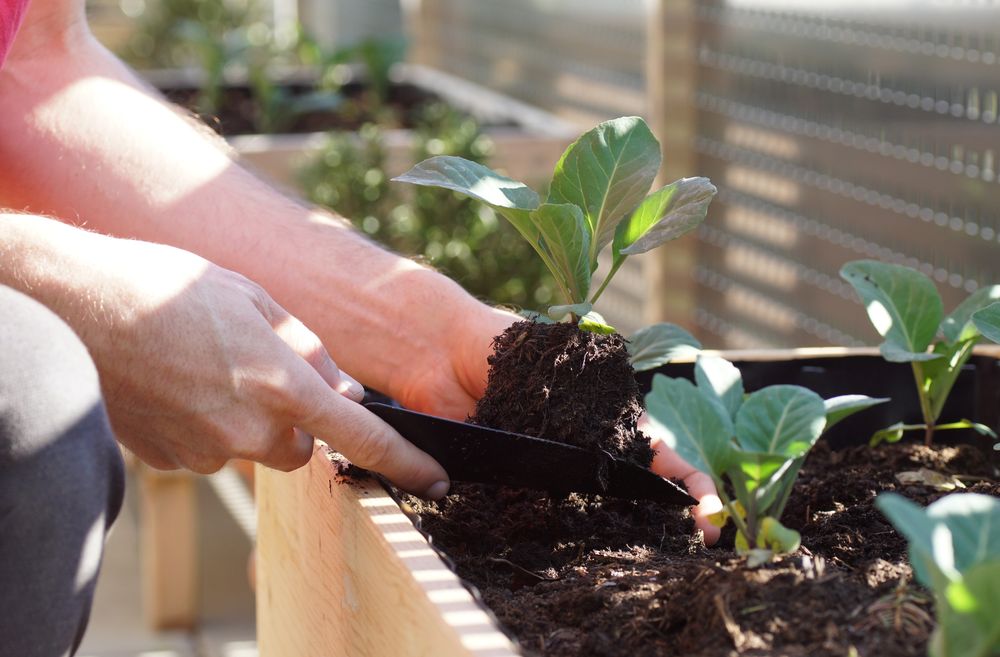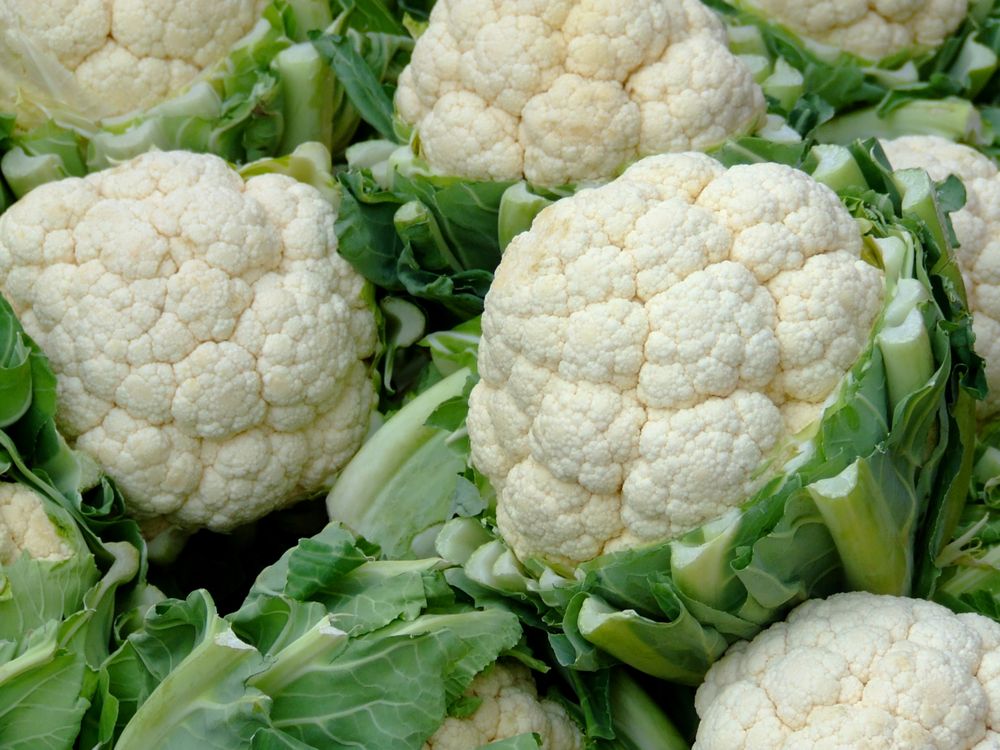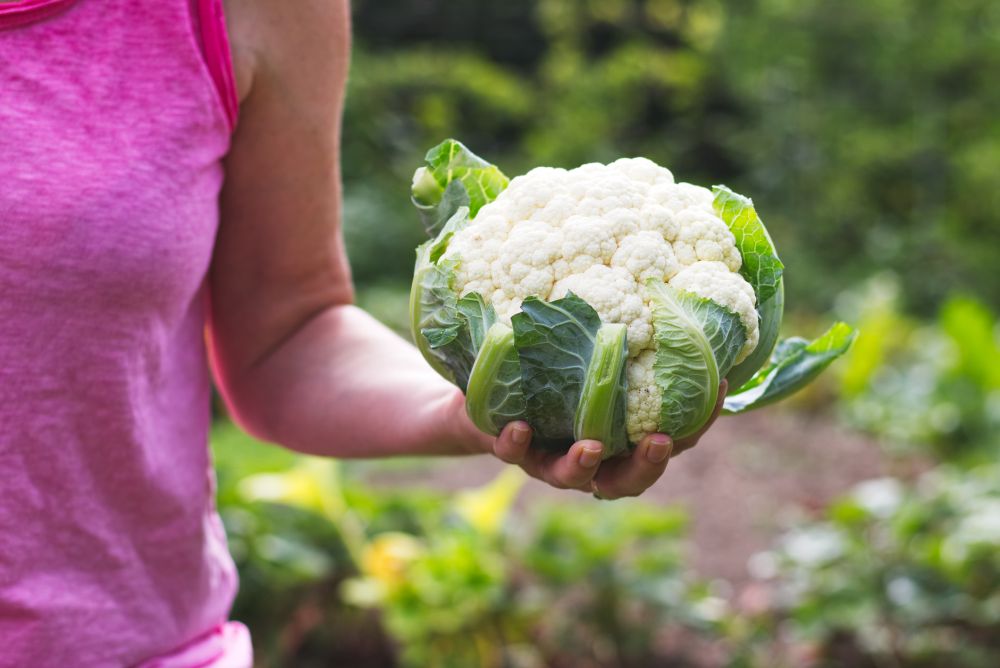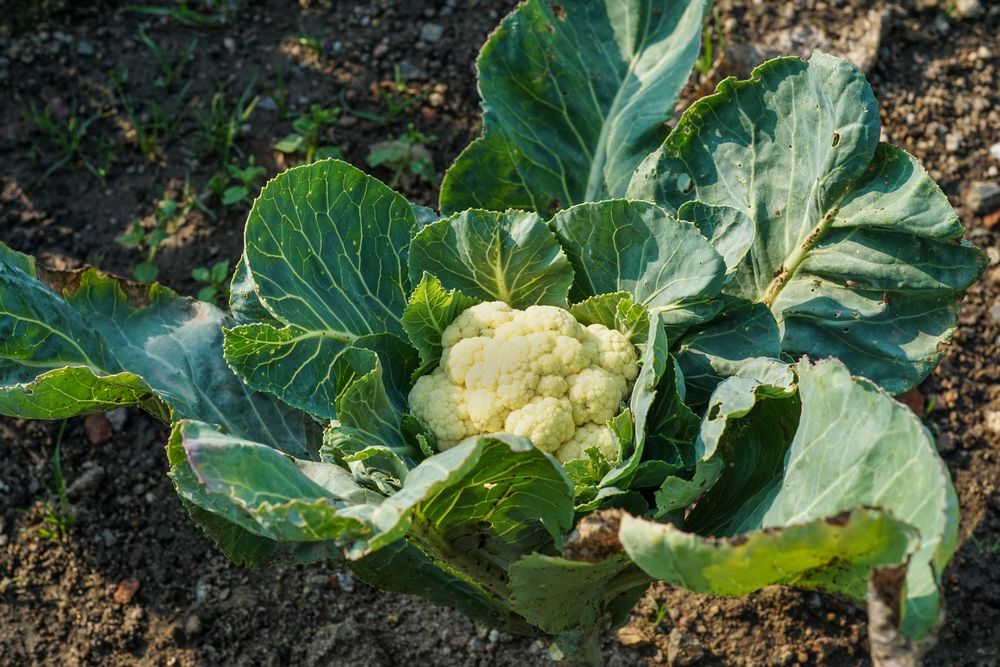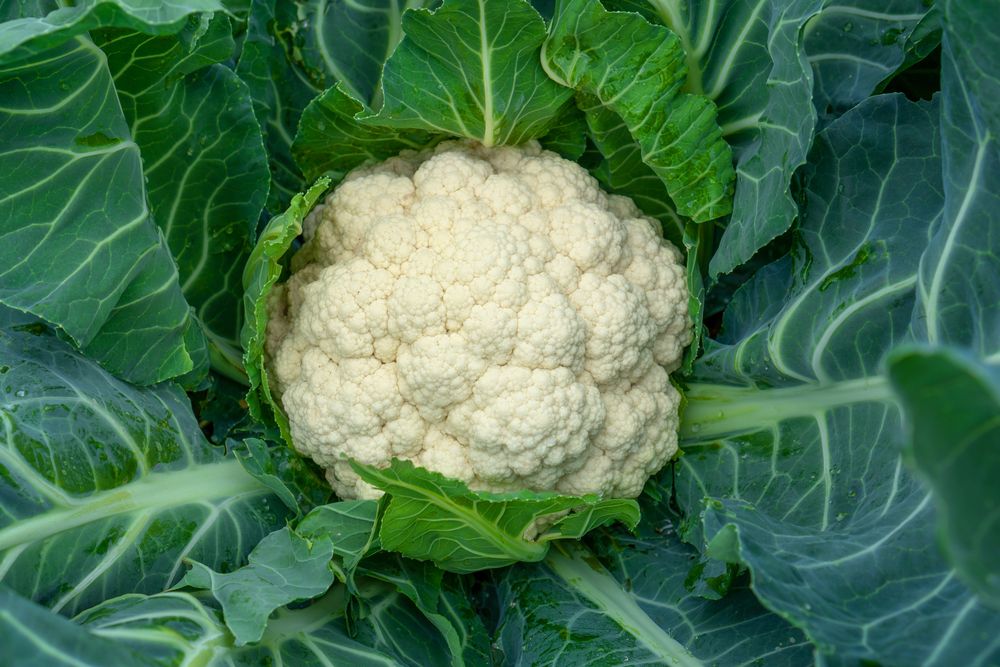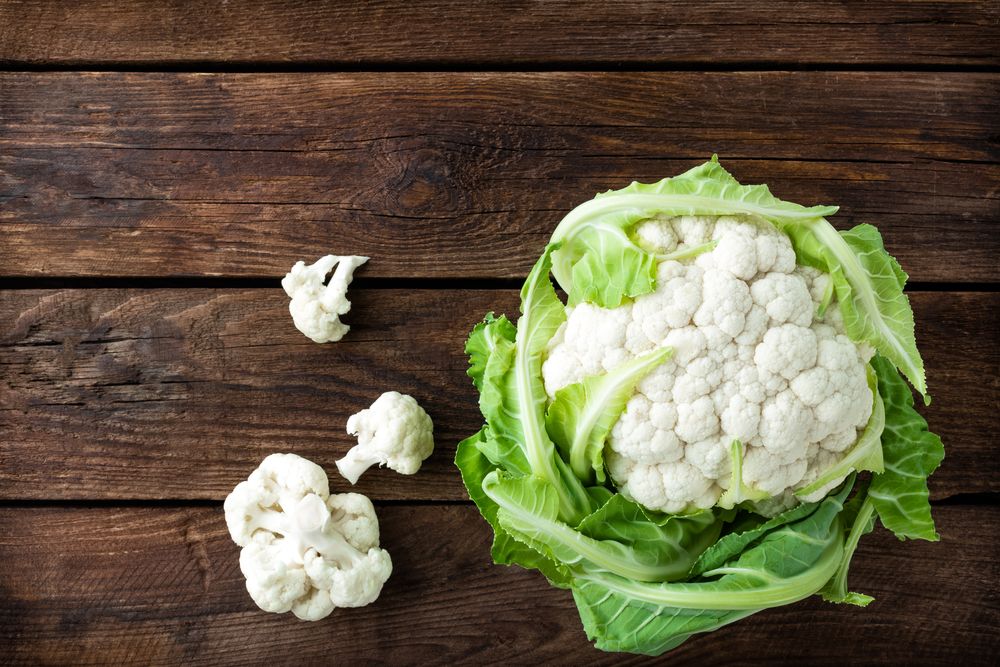Growing Cauliflower: 5 Common Problems And Their Solutions
Cauliflower is a delicious vegetable, but only if you know how to cook it. The good news is, there are many recipes that do their best to bring out the flavors and textures of this veggie.
The not-so-good news is, it can be a hassle to grow cauliflower in your garden. That’s because the most precious part of the plant, the head, needs as much care and attention as you can spare.
Growing Cauliflower – Common Problems
Sometimes the cauliflower will grow headless. Just a bunch of green leaves flapping about in the wind. Or the head becomes full of fuzz which doesn’t sit well on your tongue. And between the plant wilting and the heads turning purple, there’s a lot to watch out for and fix.
This is why we put together this list of the top 5 problems with growing cauliflower, and the best solutions for them.
Fuzzy Cauliflower Heads
Cauliflower heads that you buy at the grocery store are usually bald. They are smooth with no trace of fuzz or abnormal growth on them. Otherwise, you wouldn’t buy the veggie. But when you grow it in the garden, you might notice a fuzzy growth on the surface of the head. This is known as ricing and it’s just as bad as it looks.
Ricing is often the result of inadequate growing conditions surrounding the young cauliflower plant. These often have to do with either temperature or water. As a cool-season plant, cauliflowers flourish in temperatures averaging 60 degrees F. If the weather warms up suddenly, and the temperature rises steadily for a few days in a row, the fuzzy growth would emerge.
Another possible cause for ricing is irregular watering and lack of nitrogen. If you expose the young plant to longer periods of drought followed by sudden soaking, that could trigger ricing.
How to Fix It
Since some causes of ricing in cauliflower are preventable, while others are beyond your control, it would be better to grow varieties that are naturally more resistant to ricing. The veggie is quite sensitive and the balance between head and leaves is so tenuous that any change in the temperature or moisture can bring chaotic changes to the plant. Here are a few solutions to prevent the ricing problem in cauliflowers.
- Check the frost schedule in your area and decide whether you need to start the seeds indoors first or sow them directly in the garden.
- Don’t transplant the seedlings if the temperature outside is below 40 degrees F. That could slow the growth of the plant and lead to headless veggies.
- Transplant the seedlings when they’re below 4 inches high. That will reduce the transplant shock since the heads haven’t developed yet.
- Feed the plant with nitrogen-high fertilizer once every two weeks immediately after transplanting them. The maximum number of side dressings is 3 applications.
- Side dress with potassium once along with the three nitrogen applications.
- Make sure the soil pH is between 6.5 and 6.8 throughout the life of the plant.
- The veggie should get 6 hours of sunlight every day.
- Give the plant 1.5 inches of water every week.
Cauliflower Plants Wilting
If you’re new to growing cauliflowers, then the plant might surprise you one fine morning with wilting. It’s a common problem that happens too often and usually spells the end of the cauliflower season, since wilting veggies will not recover.
As the leaves wilt away, the heads stop growing and might actually shrink. Eventually, the plant dies out and the best thing you can do is to pull up the plant by the roots and dispose of it safely.
But what causes cauliflower wilting? As it turns out, the sensitive plants are prone to wilting because of diseases such as clubroot and verticillium wilt or it might be stress causing it.
How to Fix It
As with everything related to cauliflower, sometimes you have full control over the health of the plant, and other times you just have to accept the fact that the harvest is gone. This applies to stress as much as the fungal diseases that target this sensitive vegetable. Here’s how to combat and prevent cauliflower wilting.
- Stress: When it comes to stress, there’s a lot you can do to maintain a healthy environment around the plant. Even with the temperature fluctuations, you can still protect the veggie against severe cold spells by using row covers. If you have a short spring that turns into full-blown summer quickly, then you can start the seeds indoors early so that the veggie matures before the temperature rises above 60 degrees F. Another cause of stress is irregular watering so make sure your plants are getting one and a half inches of water a week.
- Clubroot: This fungal disease specializes in cruciferous plants, including cauliflower and cabbage. The fungus strikes on hot days and after the leaves become yellow, they start to wilt at which point there’s no recovery. Check the roots for signs of abnormal growths and remove the infected plants to prevent the spread of the disease.
- Verticillium wilt: Another fungus that targets cauliflower plants in damp conditions. What makes it a serious disease is that it infects the plants when they near maturity. Starting from the lower leaves, it moves up toward the head. The fungus lives in the soil for years and infects new plants. So the best action is to plant disease-resistant varieties.
Headless Cauliflower
If fuzzy heads and wilting cauliflower are discouraging enough, there are times when the plant will grow without heads. What’s the point of growing a headless cauliflower, you might ask. And the answer is no point at all. Without the head, the veggie looks like an empty envelope you received in the mail or an email without a body.
Since the head starts developing later in the life of the plant, you can easily miss all the clues that tell you that something is wrong with the plants. And you only realize that you have headless cauliflowers later in the reproductive phase. By then it’s too late to fix the problem.
More often than not, it’s unusually high temperatures that cause this problem. But cold weather and cold soil temperature can have the same effect on the veggie as well.
How to Fix It
A headless cauliflower is a misnomer. Because if you look closely, you’ll discover little heads growing among the leaves. They’re called buttons, and while they’re, in theory, heads, they are no good substitute for a large and well-developed cauliflower head. So, to make sure that your veggie will grow a normal head, you need to pay attention to these three factors.
- Temperature: If you have read through the above problems, you might find temperature as a common factor among them. The ideal temperatures for the cauliflower are between 55 to 65 degrees F. But if the temperature stays above 70 degrees F or drops below 40 degrees F, the veggie will have trouble developing a large head. In the case of high temperatures, you can blanch the veggies by wrapping the leaves around the head to shield it from the sun.
- Moisture: Since you need to give the plant about 1.5 inches of water a week, that means the top 6 inches of the soil should be moist regularly. Any changes in the moisture levels at that crucial level would impact the head development of the plant. Most of the root system of the plant is close to the surface, so you need to keep the soil moist.
- Feeding: Both nitrogen and potassium are crucial for the growth of the head of the plant. You might remember that deficiency of those two chemicals can also lead to a fuzzy head. Severe deficiency can lead to headless cauliflowers. This veggie is a heavy feeder and you’ll need to apply fertilizer once every two weeks from the early spring until harvest time.
Purple Tint On Cauliflower
Although the prevailing color among the cauliflowers you buy at the supermarket is usually white or creamy, that’s not the natural color of the head. If left to its own devices, your cauliflower head will choose a different color, such as purple. You need to blanch the head by depriving it of sunlight as it develops to give it that white albino color.
The primary cause for purple heads is often high temperatures. Even with blanching, if the weather turns warm all of a sudden and the air temperature stays above 70 degrees F as the head matures, you’ll end up with purple cauliflower.
Moreover, some varieties are more prone to turning purple than others. Snowwhite for example, is a cauliflower variety known for its extreme sensitivity to air temperature. It develops a deeper purple tint that can be offputting to some people.
How to Fix It
Although you only have one cause for the problem, fixing purple cauliflower is an onerous task. That’s because you’ll be grappling with the air temperature, and that’s as unpredictable as they come. Still, you can take the following measures to ensure that the flower head stays creamy and doesn’t turn into the dreaded purple.
- If you have hot spring and even hotter summer seasons, then try growing the veggie in the cool fall season.
- For fall season growing, make sure the head matures in September or October before the temperature drops.
- Blanch the head when it has reached the size of a golf ball. Wrap the outer leaves all the way over the head without actually touching it. Inspect the wrapped leaves periodically to make sure insects or fungi are not growing there.
- Plant varieties that naturally blanch with no human intervention.
Loose Cauliflower Heads
So far, we have been focusing on the issues of the cauliflower head. That’s because the head is the most prized part of the veggie. And you’d give it your utmost attention and care to make sure it develops well and doesn’t get any discoloration. But what can you do when the head becomes loose?
A loose cauliflower head is another common problem that has to do with inadequate air temperatures as well as irregular watering patterns. Even spacing between the plants can cause this problem, especially if there’s not enough room between the two heads and they end up jostling for space, which weakens both of them.
How to Fix It
You don’t just have to pay attention to the air temperature, moisture in the soil, and spacing between the plants. You also need to check the chemical balance of the fertilizer you use. If you give it too much nitrogen, you might end up with large but loose heads.
- Protect the veggies against afternoon sun exposure by providing partial shade during that part of the day.
- Don’t use excessive nitrogen and only apply nitrogen side-dressing three times during the lifetime of the veggie.
- Depending on the variety, space the plants between 24 to 36 inches to allow them enough room to grow.
- Blanch the heads to protect them against direct sunlight exposure which could heat up the plant and cause loose heads.
- Don’t expose the plant to stress from the moment the heads develop until they are ready to harvest.
